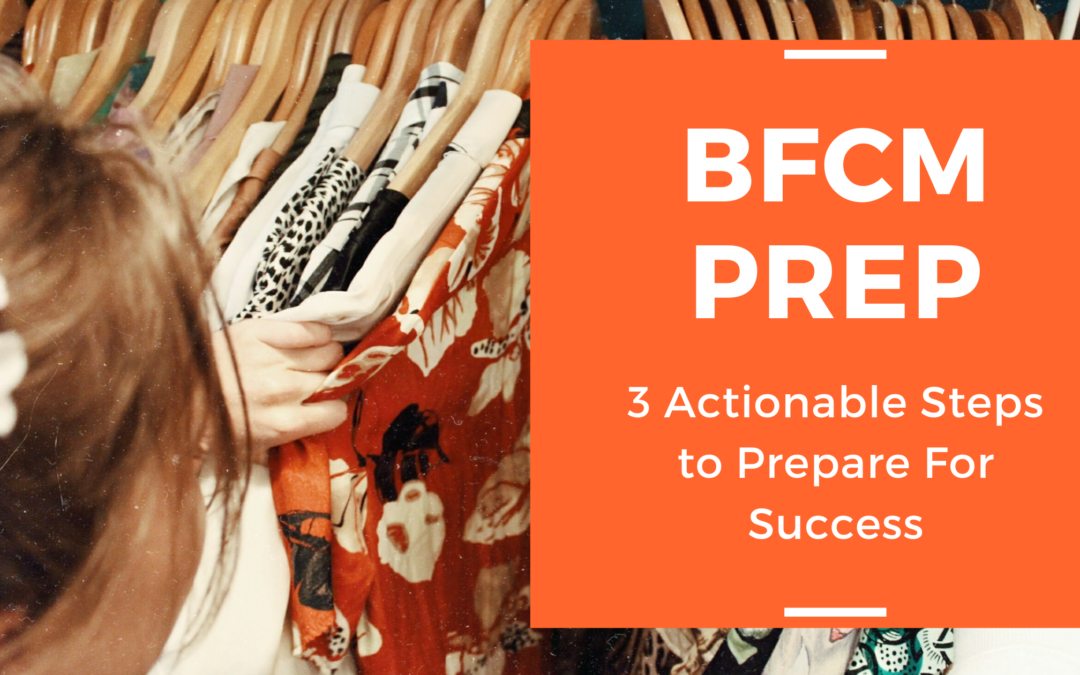You are going to be competing against a lot of noise for Black Friday/Cyber Monday. It’s one of the busiest seasons for retail brands, and consumers are ready to purchase.
2020 BFCM weekend was up 76% in sales from 2019, according to Shopify. This
Your offer will be a critical ingredient to your success.
There are two components here: what you offer, and to whom you make the offer.
This means that you need to have a better understanding of your potential customer before you make the offer.
Follow this recipe to achieve better conversion rates, faster list growth, and higher average order value.
In short, you will be able to put forward relevant, personalized offers.
The following are simple strategies to understand your customers better, so that you can serve their needs better.
After all, as Seth Godin says, “Marketing is the selfless act of serving your customer base”
91% of consumers are more likely to shop with brands that provide offers and recommendations that are relevant to them, according to Accenture.
Figure out what those offers and recommendations are, and you can set yourself up for success.
Here’s the secret: you need to ask your customers what they want.
A quiz is your solution.
Here’s how you can set this up, in preparation for BFCM and beyond.
Step 1: Understand Your Customer — Who Are They Buying For?
This is a simple question: who are your customers buying for — themselves, or a gift for someone else?
According to PYMNTS, almost 25% of Black Friday shoppers spent 90% of their budget on gifts for others.
Your marketing strategy and product positioning will change depending on who your customer is.
For example, based on the feedback, you will change your marketing and outreach in the following way:
– What problems you solve for. Gift-givers will be more transactional, customers buying for themselves may want more of the brand story, product benefits, and education.
– What offers you send. You can follow up BFCM with last minute gift card ideas for those buying gifts in mid-December.
– How you introduce your brand in welcome emails. Shorten the welcome flow for those buying gifts.
Here’s how Tea Leaves starts their quiz establishing what the purchase intent is, as a gift or for themselves:
If they are buying for themselves, ask about their own experience:
And if it is a gift, then naturally you want to ask about the recipient’s preference:
And more detailed questions about the ideal gift, like the type of tea:
And purpose of the gift:
And budget:
The data that you gather here will impact your marketing strategy after you capture the contact information.
Step 2: Understand Your Customer – What Problems Do They Have?
Your product likely serves different purposes for different people.
If you have created your Ideal Customer Profile, you have already confirmed that different personas have different needs (see Hubspot’s famous examples of Marketer Mary or Owner Ollie, and their tool to build your own Personas)
Gathering a better understanding of what your customers are looking for solves three huge obstacles to improving conversion rate:
1. What product you recommend
2. How you position your product
3. The education and content that you share
For example, hair care brand Naturall asks customers what their hair goal is, to better understand what “success” looks like to the customer:
The response to this question will bucket customers into different segments of the product that is best for their needs, and how that product’s benefits are communicated.
Electric Skateboard brand Evolve Skateboards learns about how the customer plans to use the board:
And under what conditions:
These questions are critical in creating a relevant and personalized product recommendation.
This ultimately translates into higher conversion rate and more sales.
As noted by Barilliance, customers who click on recommendations have a 70% higher purchase rate.
Ask your customers for this information to set your marketing campaigns up for success for BFCM and beyond.
Step 3: Communicate With Your Customer – How Can You Reach Them?
Now it’s time to capture their contact information — an email:
Phone number (or both):
Before showing the product recommendations, as nut milk brand JOI does:
And you have already asked key questions about what they are shopping for, which can be automatically attached to their contact information in your email or SMS platform.
AN IMPORTANT NOTE:
According to Klaviyo, 48% of BFCM sales came from existing customers.
This means that you have an opportunity to learn more about your existing audience, in order to serve them better in the rush of the BFCM madness.
Here’s how you can do that:
Step 1: Send an email to your existing list. You can send a simple email to your list, like makeup brand IL MAKIAGE:
Source: Milled
Or run paid ads, like remarketing ads to existing customers or a warm traffic list, like this Goli ad:
Step 2: Learn more about your customers:
For example, Goli has a 3 question quiz:
To learn their primary goals:
Source: Goli
Secondary goals:
Personal habits, in this case their diet:
And then a recommendation:
Step 3: Step Up Your Marketing!
You are now equipped with a small yet powerful set of information about your customers: their challenges, goals, interests, and which product is most appropriate for them based on their explicitly stated needs.
Now you can unleash your marketing fury and stand out during your BFCM campaigns with highly targeted, personalized campaigns!

